Invisalign is a modern orthodontic solution that offers a nearly invisible alternative to traditional metal braces, favored by adults and older teens for its aesthetic appeal. It involves a series of custom-made, clear plastic aligners designed to progressively shift teeth into the desired position with minimal visual disruption. The treatment begins with dental impressions or digital scans, leading to a set of personalized aligners tailored to each patient's unique needs. Each aligner exerts controlled force on specific teeth, nudging them towards alignment over time. Invisalign not only improves the appearance of the teeth but also facilitates better oral hygiene due to its removability, allowing patients to maintain a high standard of dental care throughout treatment. Specialized orthodontists and trained general dentists monitor and adjust the aligners at regular intervals to ensure that treatment progresses as intended, minimizing discomfort and preventing potential issues such as misalignment. Patients must wear their aligners for 20-22 hours daily and attend scheduled appointments to change aligners and receive check-ups, which are essential for maintaining both oral health and the success of the tooth alignment process. This careful management ensures that Invisalign treatment achieves the desired results with patient comfort and satisfaction as top priorities.
Exploring the intricacies of orthodontic care, this article delves into the critical role of specialists in executing effective clear aligner therapy with Invisalign. From initial assessment to final alignment, these experts guide patients through a personalized journey that prioritizes comfort and oral health. We will traverse the evolution of orthodontic treatment, emphasizing how Invisalign has revolutionized the field, and examine the multifaceted approach required for successful aligner therapy. Join us as we uncover the importance of specialist collaboration in achieving a confident, straight smile with Invisalign’s state-of-the-art solutions.
- Understanding Clear Aligner Therapy with Invisalign: An Overview
- The Evolution of Orthodontic Treatment: Invisalign's Impact on Dental Health
- Assessing Candidacy for Invisalign: The Role of Dental Specialists
- Invisalign Treatment Planning: Expertise of Orthodontists and Dentists
- Precision and Personalization: How Invisalign Specialists Customize Treatment
- Monitoring Progress and Adjustments: The Importance of Regular Check-Ups with Invisalign Experts
- Maintaining Oral Hygiene and Comfort During Invisalign Treatment: A Specialist's Guidance
Understanding Clear Aligner Therapy with Invisalign: An Overview
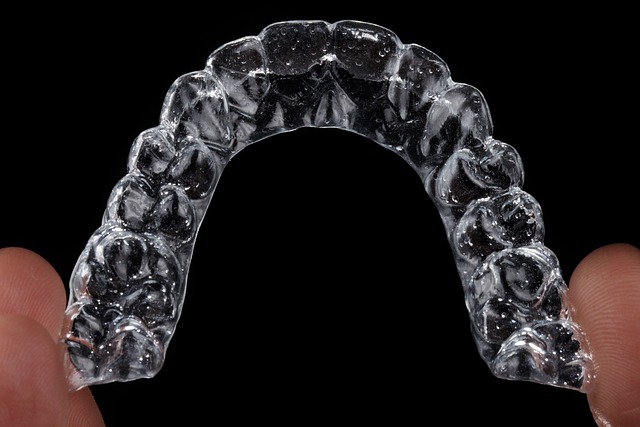
Clear aligner therapy, exemplified by products like Invisalign, represents a modern orthodontic approach that offers patients an alternative to traditional braces. Invisalign consists of a series of custom-made, clear plastic trays that incrementally shift teeth into their desired positions. These aligners are virtually invisible, making them a preferred choice for adults and teenagers who seek the benefits of orthodontic treatment without the aesthetic implications of metal brackets and wires. The process begins with dental impressions or digital scans, which are then used to fabricate the series of aligners tailored to the patient’s unique treatment plan. Each aligner is designed to exert precise pressure on specific teeth, gradually moving them into alignment over time. This method not only addresses dental misalignment but also improves overall oral health by facilitating better oral hygiene maintenance during treatment since the aligners are removable. Specialists in this field, such as orthodontists and dentists trained in Invisalign systems, play a crucial role in assessing candidates’ suitability for clear aligner therapy, designing the treatment plan, monitoring progress, and making necessary adjustments to ensure the best possible outcome. Their expertise is indispensable in optimizing the efficacy of Invisalign, ensuring that patients receive personalized care and achieve a straight, healthy smile.
The Evolution of Orthodontic Treatment: Invisalign's Impact on Dental Health
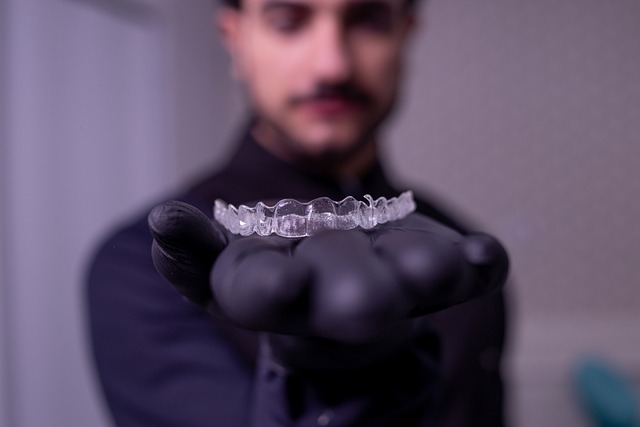
The field of orthodontic treatment has undergone significant transformations over the years, with Invisalign playing a pivotal role in shaping its current landscape. Traditional braces once dominated the orthodontic sphere, offering reliable but noticeable solutions for misaligned teeth. The introduction of clear aligners marked a paradigm shift, providing patients with an aesthetically pleasing alternative that could be easily mistaken for natural teeth. Invisalign, as a pioneer in this arena, has been instrumental in enhancing the patient experience by offering precision and comfort without compromising on the effectiveness of the treatment. This evolution has not only altered the perception of orthodontic care but also expanded its accessibility to a broader demographic, including adults who previously may have been hesitant due to cosmetic concerns.
The impact of Invisalign on dental health extends beyond mere alignment of teeth. Its ability to create a series of custom-made aligners allows for a controlled and gradual shift in the positioning of teeth. This method minimizes the risk of dental trauma often associated with more traditional fixed appliances. Additionally, the removable nature of Invisalign aligners facilitates better oral hygiene practices, as patients can easily clean their teeth without the obstruction of brackets and wires. Specialists in clear aligner therapy are equipped to leverage this technology, ensuring that each patient receives personalized care tailored to their unique dental needs. Their expertise is crucial in monitoring treatment progress, making necessary adjustments, and providing guidance on optimal wear time for the best possible outcome, thus underscoring the significant role of specialists in the evolution and success of orthodontic treatment with Invisalign.
Assessing Candidacy for Invisalign: The Role of Dental Specialists
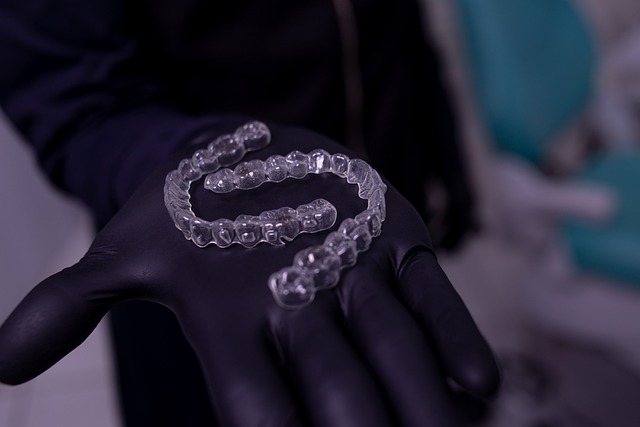
When considering Invisalign treatment, a critical step is assessing a patient’s candidacy for this orthodontic solution. Dental specialists play an indispensable role in determining whether Invisalign aligners are the most suitable option for an individual’s dental alignment needs. These experts evaluate a range of factors including the complexity of the case, the patient’s compliance history with wear, and the current state of oral health. They meticulously examine dental records, bite relationships, and the alignment of teeth using diagnostic tools such as X-rays and digital impressions. This thorough analysis is crucial to ascertain that Invisalign therapy aligns with the patient’s specific needs and goals for a healthy and aesthetically pleasing smile. Dental specialists also take into account the patient’s lifestyle, dietary habits, and any existing restorative work when planning treatment with Invisalign. Their expertise ensures that each patient is provided with a personalized treatment plan that optimizes the effectiveness of the aligners for optimal results.
Invisalign Treatment Planning: Expertise of Orthodontists and Dentists

orthodontists play a pivotal role in crafting personalized Invisalign treatment plans, leveraging their specialized knowledge to address a variety of dental and occlusal issues. The expertise of these professionals encompasses a deep understanding of the biomechanics of tooth movement, as well as the intricacies of a patient’s unique dental anatomy. This informed approach allows orthodontists to meticulously design a sequence of clear aligners that are tailored to gradually shift teeth into their optimal positions. The process begins with detailed diagnostic procedures, including 3D imaging and impressions, which are critical for visualizing the treatment’s trajectory. Throughout the treatment, regular monitoring and adjustments ensure that each aligner progressively moves the teeth as planned, ultimately achieving the desired aesthetic and functional outcomes.
In tandem with orthodontists, general dentists with training in Invisalign also contribute significantly to the success of clear aligner therapy. These practitioners often serve as the initial point of contact for patients seeking orthodontic treatment. They assess the patient’s dental health, establish the necessity for treatment, and determine if Invisalign aligners are a suitable option based on the complexity of the case. Dentists with Invisalign experience utilize clinical expertise to plan the initial stages of treatment, often using digital smile planning tools to simulate tooth movement and predict potential outcomes. This collaborative effort between orthodontists and general dentists ensures that patients receive comprehensive care, optimizing their experience with Invisalign and achieving successful alignment of their teeth.
Precision and Personalization: How Invisalign Specialists Customize Treatment
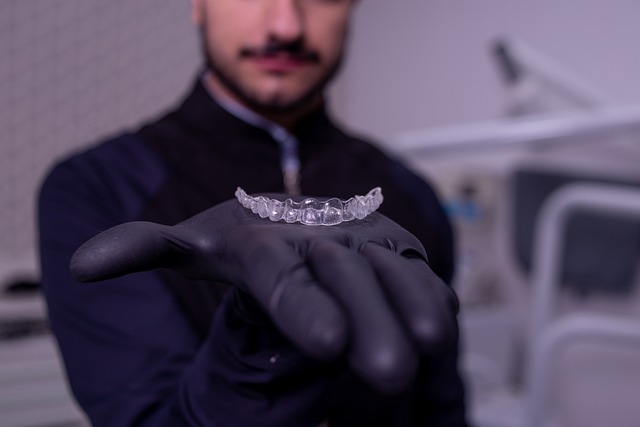
Orthodontic treatments have evolved significantly with the advent of clear aligners like Invisalign, offering patients a discreet option for straightening their teeth. Invisalign specialists play a pivotal role in customizing treatment plans to ensure precision and personalization. These professionals leverage advanced imaging and diagnostic tools to create a detailed 3D model of the patient’s dental structure, which serves as the foundation for designing the aligners. This meticulous process allows for the creation of aligners that are not only tailored to the unique contours of each patient’s teeth but also to the specific biomechanical needs of their individual case. The specialists fine-tune the aligner sequence, gradually shifting the teeth into their optimal positions with pinpoint accuracy. This approach not only enhances the aesthetic outcome by being virtually invisible but also minimizes discomfort and accelerates treatment time compared to traditional braces. Invisalign’s iTero digital scanning technology further empowers specialists to deliver a precise fit, reducing the likelihood of misalignment or improper occlusion during therapy. The commitment to precision and personalization by Invisalign specialists ensures that each patient receives a treatment plan optimized for their specific dental needs, leading to superior results and a more confident smile.
Monitoring Progress and Adjustments: The Importance of Regular Check-Ups with Invisalign Experts
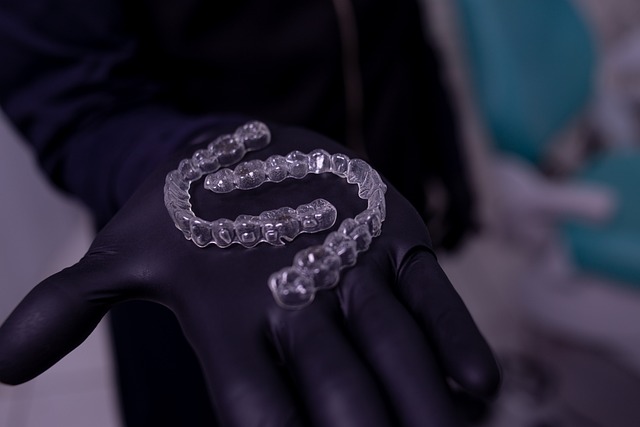
In the field of orthodontics, Invisalign stands out as a cutting-edge solution for aligning teeth effectively and discreetly. A cornerstone of successful Invisalign therapy is the meticulous monitoring of progress and the strategic timing of adjustments to ensure optimal results. Unlike traditional braces, Invisalign utilizes a series of clear, removable aligners that incrementally shift teeth into their ideal positions. This innovative approach necessitates regular interaction with certified Invisalign experts to assess treatment progression. These specialists are trained to evaluate the fit and function of each new aligner, ensuring that the patient’s dental movement is proceeding as planned without causing undue discomfort or complications.
The importance of consistent check-ups throughout the treatment cannot be overstated. During these visits, the Invisalign expert can detect minor misalignments early on, which may otherwise lead to prolonged treatment time or the need for additional aligners. These professionals are adept at identifying subtle shifts in tooth positioning and can make precise adjustments to the patient’s treatment plan accordingly. This proactive approach not only optimizes the efficiency of the Invisalign process but also enhances patient comfort and satisfaction, as any necessary changes are implemented before significant misalignment occurs. Regular engagement with an Invisalign expert is a critical component in achieving the desired results with clear aligner therapy, ensuring that each stage of the treatment is closely monitored for the best possible outcome.
Maintaining Oral Hygiene and Comfort During Invisalign Treatment: A Specialist's Guidance
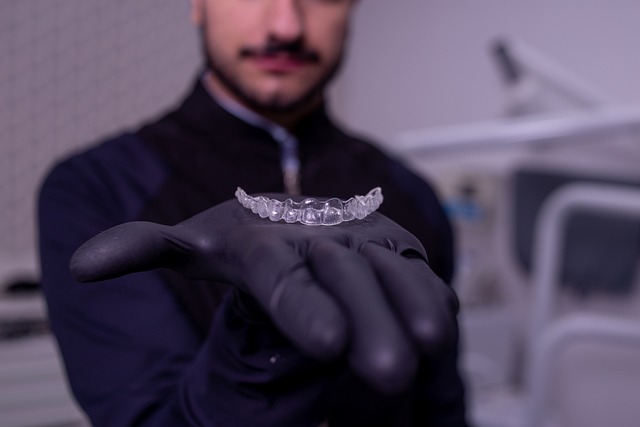
During Invisalign treatment, maintaining optimal oral hygiene and ensuring patient comfort are paramount for successful alignment outcomes. Specialists in orthodontics emphasize that regular brushing and flossing are essential practices to prevent dental decay and gingivitis, which can be more challenging with aligners in place. Patients must brush their teeth after every meal and before reinserting the Invisalign trays to remove any food particles and plaque that could cause dental issues. Additionally, using a proxabrush or floss at least once a day is crucial for reaching areas around the aligners where food debris can accumulate.
Comfort during Invisalign treatment can be enhanced with the guidance of a specialist who provides tailored advice based on individual patient needs. Specialists often recommend wearing the aligners for 20 to 22 hours each day to ensure steady progress towards straightening teeth. However, it is acceptable to remove them for eating and cleaning. To avoid discomfort, patients should transition to the next set of aligners at the prescribed time, allowing their teeth to gradually shift into position. Specialists also advise on the importance of visiting a dentist regularly throughout treatment to monitor both oral health and the progression of tooth movement. This proactive approach not only optimizes the effectiveness of Invisalign therapy but also ensures patient comfort and satisfaction with the end results.
